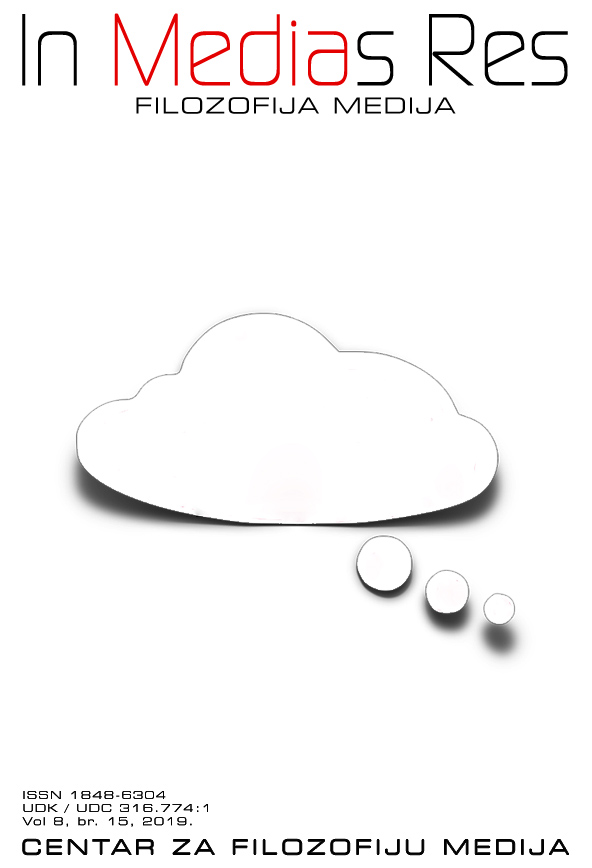Referencijalni simbolizam i semiotički aspekt djela umjetnosti i dizajna
Referential Symbolism and Semiotic Aspect of works of Art and Design
Author(s): Silva KalčićSubject(s): Media studies, Visual Arts, Epistemology, Communication studies, Sociology of Art
Published by: Centar za filozofiju medija i mediološka istraživanja
Keywords: public art; dispositif/dispositive; empathic design; activist art; visual communication; epistemology of media;
Summary/Abstract: Destination: Unnamed, the exhibition in the billboard medium by Nadija Mustapić and Toni Meštrović (2017), is an example of art in public space (photographs in a standard advertising space in the format of a billboard poster), whereas the poster for the theatre play Fine Dead Girls, directed by Dalibor Matanić (Gavella, Zagreb, 2013), is the work of design in public space (of both the city and the mass media, in the format of a theatre poster) in the context of national visual arts of today. With these examples I have connected the following subjects: 1. Agamben’s dispositive, derived from the juxtaposition or the interpenetration of relations of power (for example, through governantism) and relations of knowledge (discursive and non-discursive ones), which perceives art practices as formations of the relations of power. 2. Compression of time impoverishes, depletes cultural signs, transforming them into “zero signs” or “weak signs,” according to Agamben. Boris Groys notes that such “weak” signs triumph over the strong and “powerful” signs of our time, those of authority, tradition, power, but also over the powerful ones of rebellion, passion, heroism. 3. “Poor image,” in the sense this term is used by Hito Steyerl (in her text „In Defence of the Poor Image,“ 2009) when referring to the mass-distributed and reproduced image in the digital media network.
Journal: In Medias Res
- Issue Year: 8/2019
- Issue No: 15
- Page Range: 2401-2421
- Page Count: 21
- Language: Croatian

